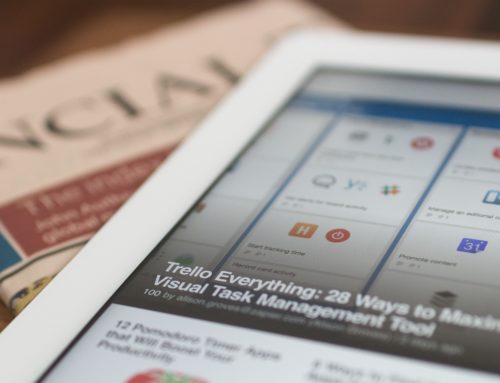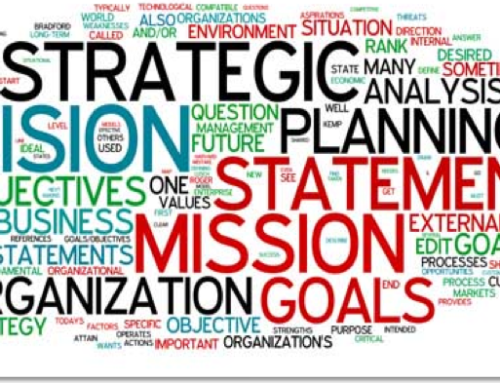 The Public Relations Society of America has spent the past few months collaborating with other PR associations around the globe on a redefinition of the term “public relations.”
The Public Relations Society of America has spent the past few months collaborating with other PR associations around the globe on a redefinition of the term “public relations.”
This is a task that has been championed since the late 1970s when Edward L. Bernays presented his case for a redefinition of PR in his Public Relations Quarterly (Spring 1978) article “Defining Public Relations,” observing that our profession was, in his eyes and at that time, in need of an overhaul.
It only took another quarter-century to actually do this…but it’s done!
Alea iacta est! “The die is cast.” Maybe not quite that final, but it’s done… and published.
My students asked a very simple question when I told them about this undertaking:“Why?”
Love it when, out of the clear blue, I get asked an admirably logical question! Kind of makes me put my proverbial “money where my mouth is.”
My response was and continues to be, “To be sure that what we use … the words we use … to define what we do on behalf of clients or employers continues to apply in today’s mega-wired world where what we say and what we do is seen and reacted to by a global and often quite vocal audience of stakeholders.”
Yeah, I know that sounds all lofty and self-serving. But until my own mother, who has known me longer than anyone else, can verbalize her eldest son’s profession, I won’t be satisfied.
She has no trouble describing what my siblings do. One’s a minister. One’s an architect. One’s a retired social services administrator.
To quote super-chef Emeril Lagasse, “Bam!”
Well, the results are in, and PRSA has announced with great fanfare an internationally-recognized redefinition of “public relations.”
If all goes as planned, scores of public relations professionals, professors … and their mothers … will now be able to explain with minimal hoop-jumping what this wonderful field is all about.
And here it is. Public relations, as defined by the Public Relations Society of America in collaboration with nearly a dozen communications organizations worldwide) is:
Public relations is a strategic communication process that builds mutually beneficial relationships between organizations and their publics.
Not everyone is or will be pleased with the outcome of PRSA’s efforts. But those who truly care have weighed in with their opinions and offered their suggestions. And their voices have been heard.
If you’re comfortable with this redefinition (or refinement) of all that our profession entails, do as I will do and adopt it as part of your conversation with clients, employers or … in my case … students.
If it doesn’t ring all the right bells for you, use it as a launch pad for your own updated description of what it is you do for a living.
Either way, be proud of your chosen profession and help educate others!
Image: RobWhitePhoto via Flickr, CC 2.0
![[EVENT]: PR Hacks for Small Biz (online)](https://shonaliburke.com/wp-content/uploads/2021/06/FB-Ad-1200x800-01-01-01-Copy-500x383.jpeg)








Thank you for keeping us up-to-date. I truly enjoy it and discover all the info very helpful.
<a href=”http://www.careerbuilder.com/Jobs/Company/C8H53J67TYD732N6TWZ/MMI-Marketing/>MMI Marketing</a>
@shonali Uh oh. What did I do NOW?
@arthury You were being responsive and helpful. As usual. So I gave you a shout out. :)
@shonali Thanks! Always nice when an expletive doesn’t appear between “that” and “Arthur Yann” … !
@arthury LOL. We could all say that.
Kirk, I really appreciate the time those involved in this process put in. I’ve said my $0.02 over at ginidietrich place a while back, and then at mdbarber ‘s as well, and major kudos to arthury for always providing thoughtful feedback.
I *am* proud of my chosen profession. But my question to you is this: what does your mother think of this as a way to describe what her son does: “My son works in public relations, which is a strategic communication process that builds mutually beneficial relationships between organizations and their publics.”
That is not the same as saying another son is a minister, or an architect… is it? And honestly, I don’t know if we’ll ever be able to paint the picture of what WE do in a similar way. I do know that my parents would find this gobbledygook, and probably fall back on “help you get in the paper” as a descriptor.
I still don’t know what the “modern” definition of public relations is. But for me, as a practitioner, I’ve boiled it down to this: I’m a storyteller who helps businesses, for- and non-profit, make money. I help them tell their stories, in the right way, to the right people, at the right time… or at least, that’s what I try to do. Because when they do that, as long as they are doing so with their business objectives at the core of their communication strategy, they are working towards tangible outcomes.
@Shonali I think you’ve hit the nail on the head in your response. @KirkHazlett ‘s mother isn’t going to use those exact words, anymore than she would have used the old ones. There’s a difference, in my mind anyway, between a professional definition and how we.describe something verbally.
I’m guessing Kirk’s mom doesn’t say his brother is “a member of the clergy.” For me the definition is a jumping off point from which we can put into our own words the aspect of the profession that resonates for us. Unfortunately we aren’t like architects who “design buildings and supervise their construction” because our profession encompasses so many different aspects of the communications field.
For me, I’m not a storyteller…I’m a counselor. I help my clients change the image people have of their company or issue. I “do” all the key points in the definition which I see as cornerstones of our profession but that’s not how I “tell” people what I do.
@mdbarber@Shonali You’re right, Shonali, in that the “wording” doesn’t exactly roll off one’s tongue, but it does boil our goal as a PR professional down to a simple statement of purpose. How we get there, “storyteller” or “counselor” (as Mary describes her take on it), is for us individually to determine and implement.
For me, if a client…or a student…asks me what I DO in public relations, I can use the new definition as a conversation starter. Then, when the next logical question comes…”How do you do THAT?”…I get into my own interpretation of how I develop plans and programs.
Whatever the case, we’ve initiated the conversation and provided a starting point for anyone engaged in our wonderful profession to then elaborate.
Thanks to both of you for weighing in with some very valuable observations! Onward and upward!!
@jgarant @joeldon Thanks so much for sharing @KirkHazlett guest #WUL post.
Thanks for the post Kirk – I find it interesting that this ‘new’ definition is strikingly similar to previous definitions. As trevoryoung said in his recent blog post discussing the same topic – the more things change, the more they stay the same. Personally, it’s given me a lot to think about in terms of the tools we now use and the communication purposes they serve. That is, focusing not on the shiny new object, but the communication objectives that the object/medium serves.
@JGarant
Thanks, Jamie…you’re right in that the “new” is similar to the “old.” I think that’s a recognition that we have, in fact, been using a lot of the right words over the years in various contexts. This new definition (at least in my eyes) cuts to the core of what we really are about. The other words/wording just added extra levels of description to how we conduct our business and what we do. This new version, to me, allows me to say “This is what I can do for you.”
@theprcoach Thanks for the mention!
[…] http://www.waxingunlyrical.com – Today, 5:06 PM […]